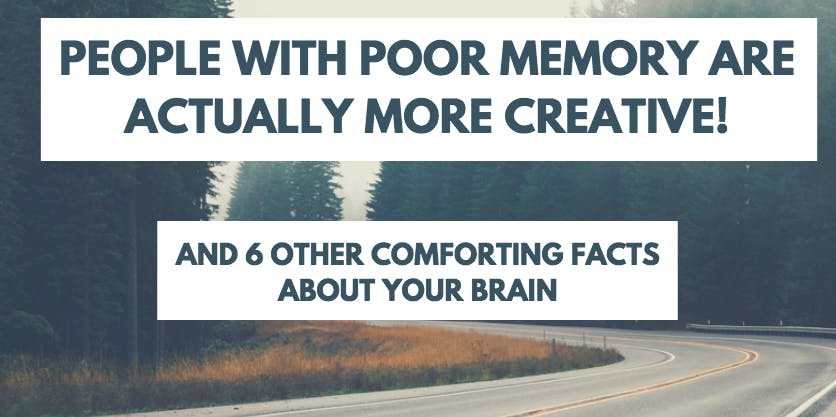When I was in college, I had one course left to graduate – Intro to Finance. It was horrible in every way. How could there be that much to say about money? After awhile the crazy jargon and lessons started to compound and build on each other in a way that I could no longer understand. I was so far out of my element that I sat in class and played with M&Ms instead.
But what if I had tried?
Barbara Oakley was also not originally inclined towards numbers (she flunked high school math and science), enrolled in the army and then realized her lack of technical skills was definitely going to hold her career back.
Today, she is a professor of engineering at Oakland University. How did she pull that off?
It’s not because she tried harder, but she did try differently.
Here’s what she tells us about learning:
1. There are two modes of learning that never work at the same time
Think about why you feel brain-fried after a long planning session. That’s your brain telling you: “I need a break!” It turns out, this break is a biological imperative that’s designed for your own good.
There are two modes of learning. Each requires the other. They work together, but never at the same time:
Focus Mode – intensive working
Diffuse Mode – recovery and relaxation
Look at how your thought gets stuck in a little circle when you sit for too long in focus mode:
Let’s illustrate using known eccentric genius, Salvador Dali.
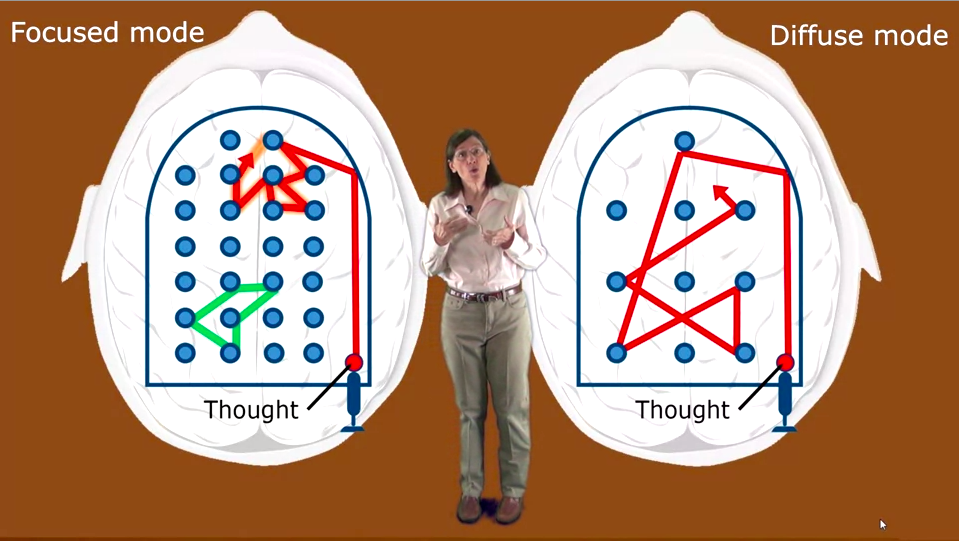
When Dali wasn’t making any progress on a piece of work, he would sit in a chair with a heavy key in his hand…and he’d relax and let his mind wander wherever it wanted to go. Just as he relaxed enough to fall asleep, the key would fall out of his hand, drop to the floor making enough of a noise to wake him up.
And he’d get right back to work with a set of ideas that had come to him while he was in diffused mode.

When your brain shuts down, recognize that it’s closed for business. When you get stuck, close up the laptop, take a walk or do something mindless and fun.
Factor recovery time into your job – then come back to a task when your brain is ready to work again.
(For more on this, check out this video clip from Barbara’s Coursera course.)
2. Focus on the time, not the task
Procrastination is an addiction. We’re addicted to not doing stuff we don’t like. Studies have shown that when you study something you don’t like, your pain centers actually activate.
This is a real, biological reaction to difficult and possibly insurmountable task.

The Pomodoro technique is really helpful for us hardcore procrastinators.
Set a timer for 25 minutes (or whatever you like) and turn off everything. No alarms, notifications – and work on nothing else but that for those 25 minutes. What’s happening to your brain when you do that?
You quit focusing on the pain of the task, and start focusing on the time. It’s a tricky little distraction for your brain.
And what a treat! At the end of 25 minutes, you reward yourself with the sweetest reward of all: progress.
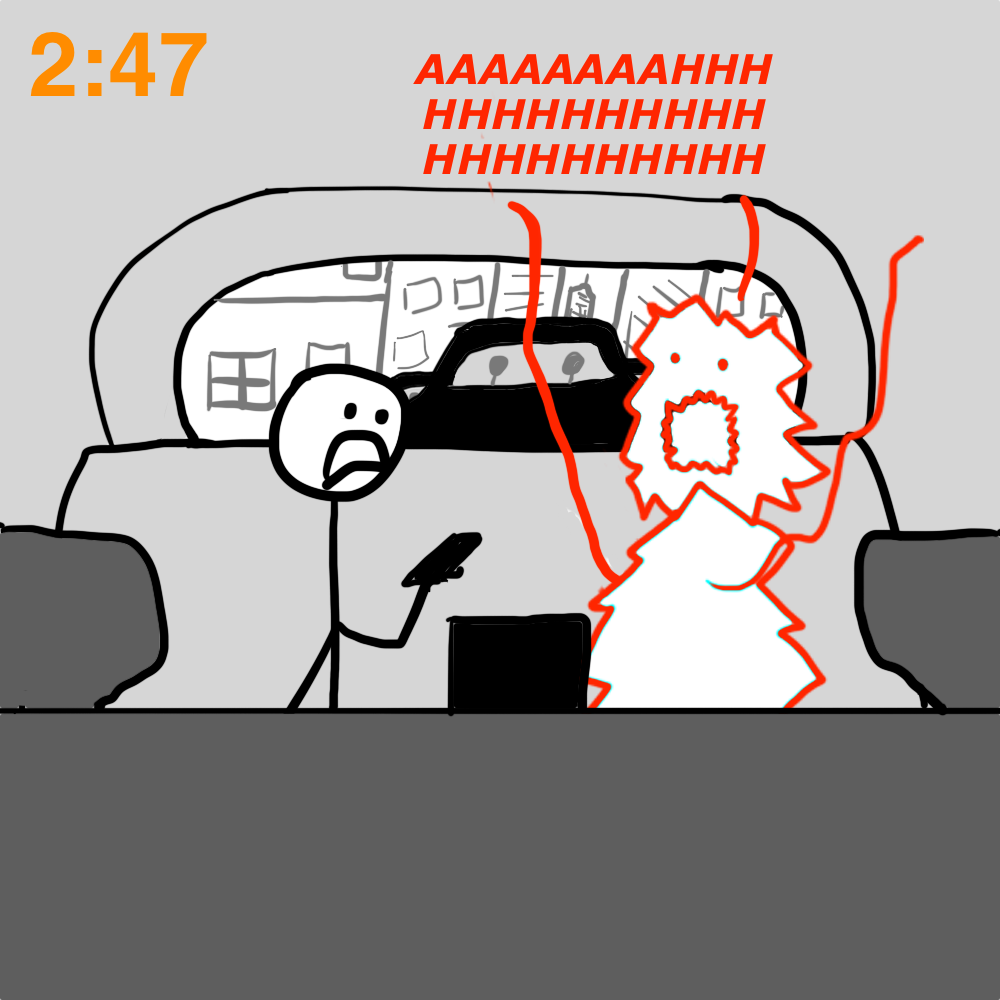
3. You'll grapple until you hear a CLICK
When kids start to learn new math concepts, their pre-frontal cortex go nuts. They’re trying to grasp and pull together a lot of new material. It looks like what you see on the left.
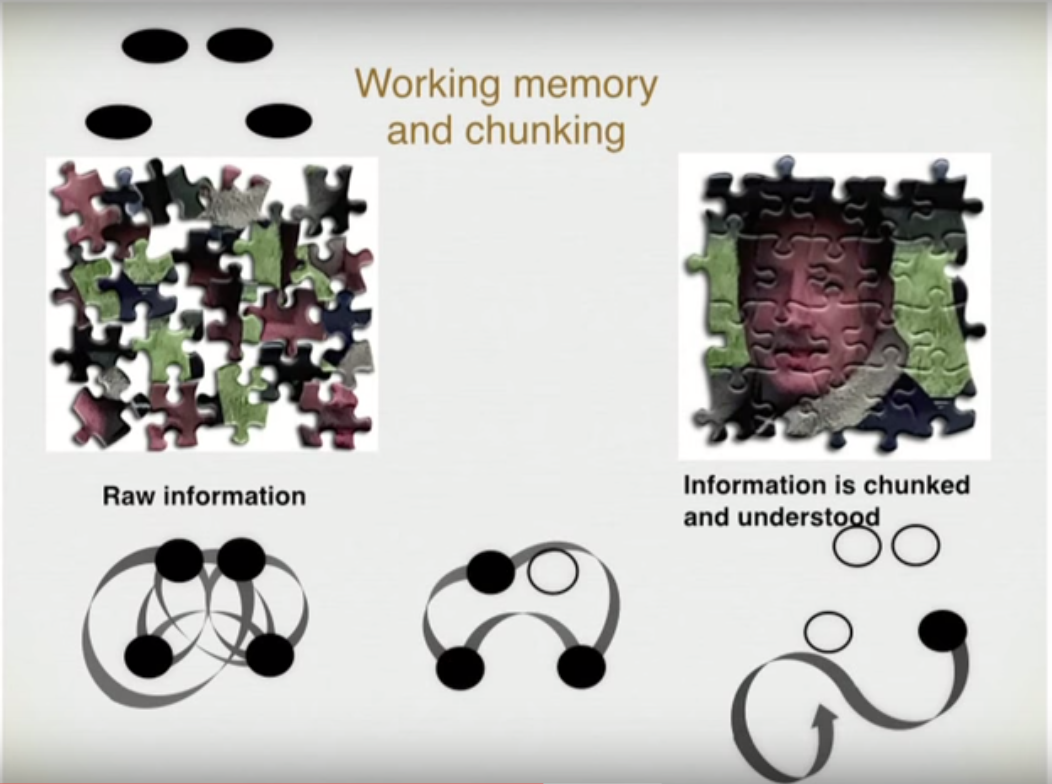
When they finally master all these strings of new information, their synapses start to relax. The information begins to come together as a single chunk, or a single “smooth ribbon” that settles into their working memory. They can then start to connect that chunk to other chunks, form new connections and solve new problems by building on their existing knowledge.
This is a really strong argument against memorizing concepts without understanding what you're learning. Memorizing is a temporary hack, but you can’t build new knowledge on top of it the way you can when you chunk information the way you see above.
First master a chunk of information and then form the bigger picture that you’d otherwise use to work more efficiently and build connections between ideas.
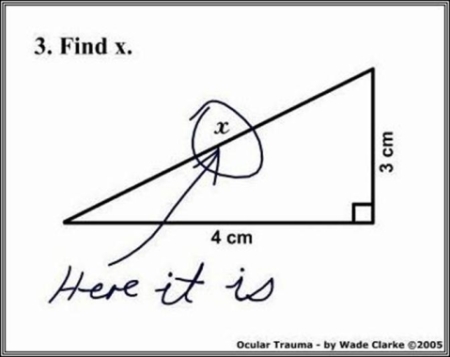
4. People with poor memory are actually more creative
Good news for those of us who can’t remember what we had for breakfast (or whether we even remembered to have breakfast). We are more creative than our more responsible counterparts!
If you’re easily distracted by shiny things and terrible at remembering, that’s because you’re not able to hold ideas in your working memory. That’s because new things are always slipping in, you creative bastard! While your colleagues might be able to remember the details of a conversation, you’ve moved on. You’re making other connections with new ideas that they can’t see.
The good news is: You’re more distracted, but you’re also highly creative.
The bad news is: You have to work harder than other people to make up for that.
Rejoice anyway. You were born with a natural competitive advantage – all you have to do is train yourself to handle it.
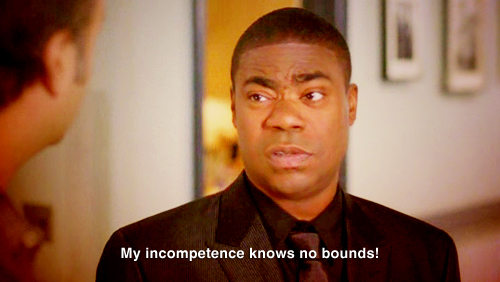
5. Slow thinkers aren’t dumb
Does it take you longer than everyone else to learn something new? Then here’s something you probably do better than everyone else.
Barbara tells the story of Santiago Ramon y Cagal. He was a Nobel Prize Winner and known as the father of neuroscience, but certainly didn’t think of himself as a genius. He was persistent and hard-working, but it took him much longer than usual to pick up new concepts. Others with “race car brains” would move fast and jump to conclusions, and often the ones they wanted to see.
Cajal would meander, deliberate and make his way through new material – and when something didn’t quite make sense he would say, “Hey, wait a second.”
He was much more flexible in his thinking because he was in no rush to arrive at a conclusion. Like a hiker, he would stop and smell the flowers and much more equipped to notice the details that didn’t quite add up.
Slow thinkers are just as capable of quick thinkers – they’re just taking the scenic route.
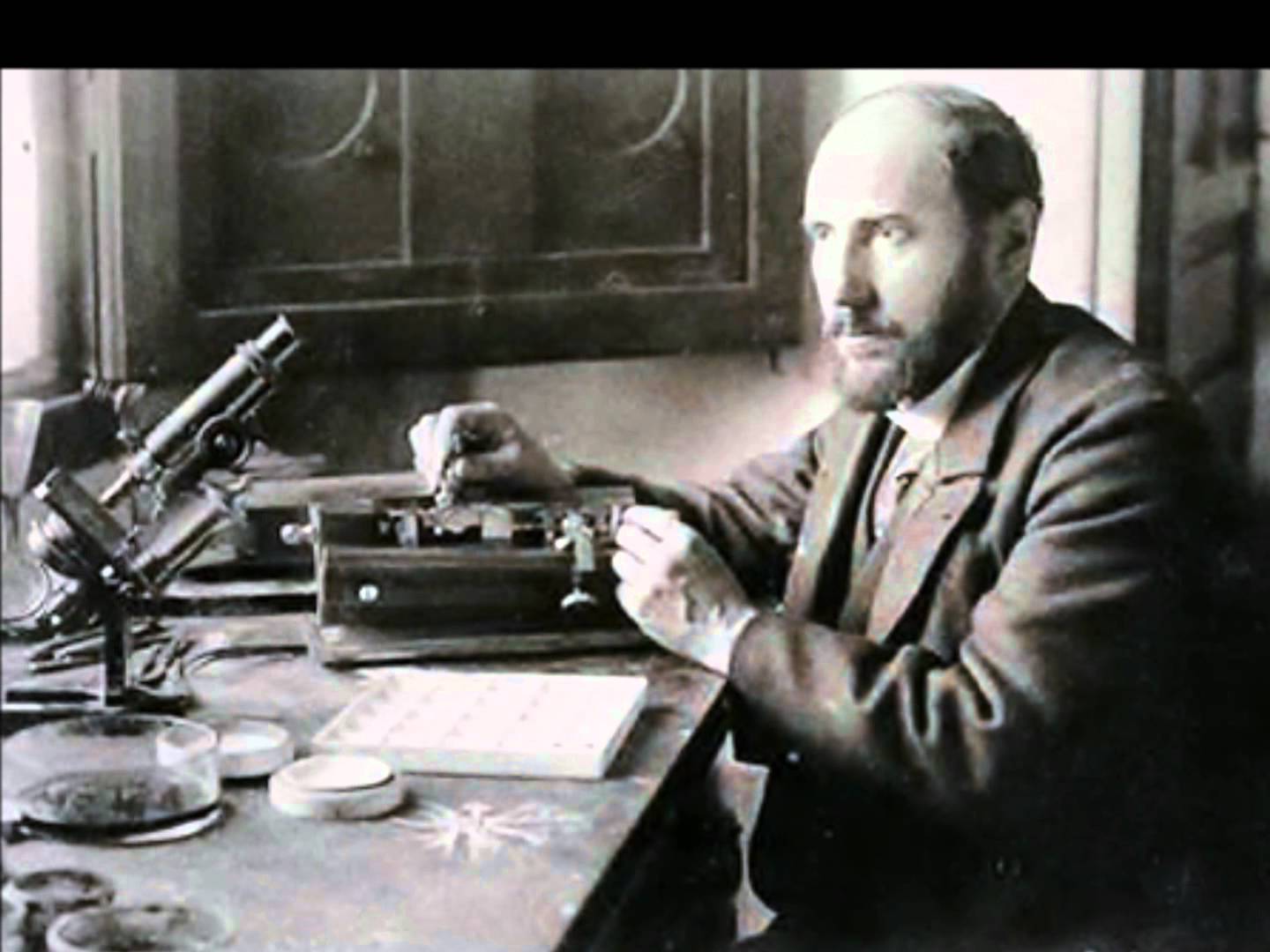
6. You can improve your learning just by memorizing
If you were a bad test taker back in school, Oakley says there’s a good chance it’s because you didn’t know the material like you thought you did. (Sorry!)
Most students who end up doing poorly on tests have only gone through a problem set once or twice, probably for homework. When they see questions come up in a different form, they panic. They don’t how to answer any of this!
The ones who do well on these tests have been doing something differently: they’ve memorized key steps and facts. Essentially, they’ve processed large amounts of information into chunks – and all they have to do during the test is recall what they already know.
How? Through sheer repetition.
No other technique comes close. Not even hands-on learning can replace the value of memorization. “Mind mapping and re-reading are not nearly as good as recall,” adds Oakley. “Practice makes permanent.”
7. You’ll learn faster if you teach it!
Think you’re not qualified to teach something? You’re probably right, but don’t let that stop you!
Even if you have no idea what you’re talking about, teach your (hopefully kind) friend or colleague the task or concept you’re trying to learn. This helps you:
- Test your own understanding
- Get more confident about what you know
- Internalize things better than you would through passive reading or highlighting

How does that saying go? Oh yes, this:
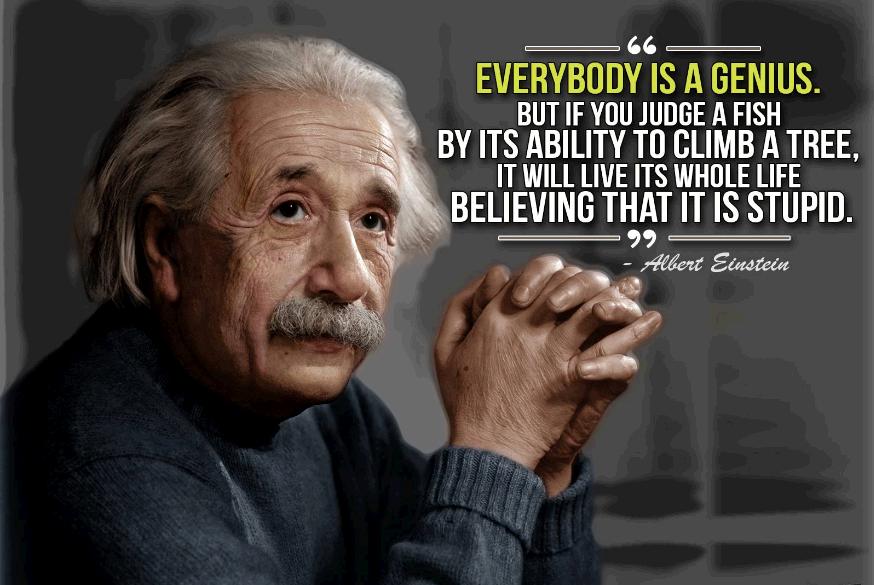
Hope you’re feeling a little better about yourself.
(This post was inspired by Oakley's super informative talk at Google. Definitely watch it!)
